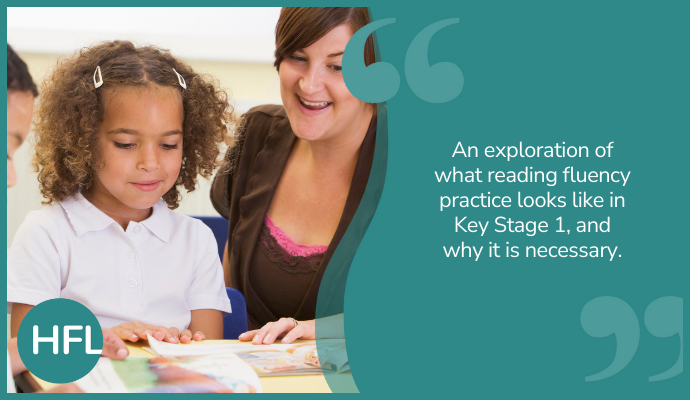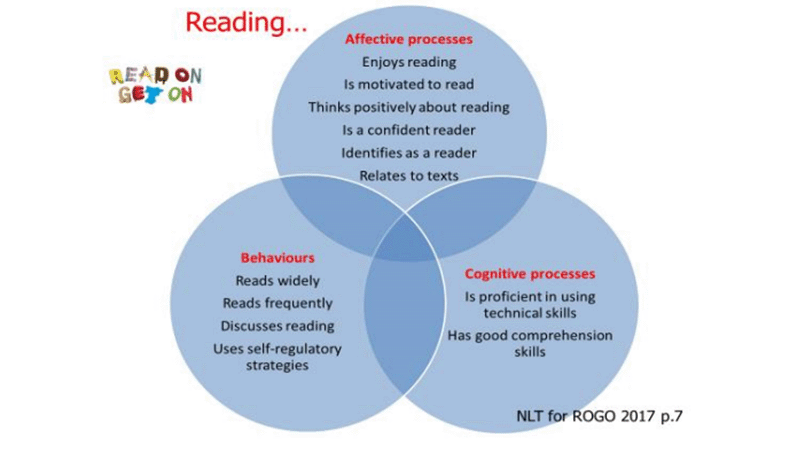
Phonics first
What does Reading Fluency instruction look like in KS1? This is often a question that we are asked in our work supporting schools with their struggling readers in key stage one. If children are in danger of not passing their phonics screening check, we are finding that most schools’ phonics programmes will support them to carefully assess which GPCs a child needs to know next to support them to make progress. This blog from our archives provides some useful, practical strategies to support teachers to grapple with some of the trickier GPCs. For some children, it takes longer to acquire the knowledge needed to pass the Phonics Screening Check and they will need additional phonics teaching, and plenty of additional practice in the form of assessment and application into reading and writing too, to close those gaps and hopefully pass the re-take in year 2.
Following the Phonics Screening Check
What about children who pass the phonics screening check but who don’t read fluently by the end of year 2? Children who can decode individual sounds perhaps, who can blend them together into single words, but who struggle with phrasing appropriately when attempting to read longer sentences. These children often revert to reading each word in turn, so the meaning of the sentence becomes lost to them. In this video, produced by the DfE in January, we have some helpful reading behaviours and indicators to look for when considering whether or not a child would benefit from fluency instruction. It beautifully echoes messages in this earlier blog (Reading fluency? How do I teach that?) published in December 2022, based on learning gleaned at the HFL Fluency Expo in October. What is reading fluency then? In that blog, we provided a helpful definition of reading fluency and discuss those reading behaviours that we’re likely to see in a disfluent reader (if you haven’t yet had a chance to read, it might be worth doing so before proceeding). The stories of Alice and Jai outlined in the aforementioned blog and video will be all too familiar to us. Children become adept at slipping under the radar, at masking their lack of confidence in reading and often they are not a top priority for schools until they can no longer hide, perhaps in the run-up to their KS2 SATs paper in year 6. Recent experience working with schools tells us that there are likely to be a significant number of these ‘hidden disfluent readers’ in LKS2, who, as a result of a disrupted education prompted by the pandemic, have slipped under that radar. Identifying these pupils through high-quality diagnostic assessment (perhaps using the multi-dimensional fluency scale developed by Professor Tim Rasinski) is essential for making evidence-informed curriculum adjustments and responsive teaching.
Reading fluency instruction to the rescue!
The good news is that we now know enormous amounts about how to support children like Alice and Jai. Thanks to influential and tenacious educators like Professor Tim Rasinksi and Alex Quigley, we know that reading fluency is the bridge between phonics and comprehension. We know that simply being able to read the words on the page isn’t enough. The STA end of Key Stage One Teacher Assessment Framework (TAF) tells us that pupils need to be able to read most words accurately without overt sounding and blending, and sufficiently fluently to allow them to focus on their understanding rather than on decoding individual words. Children need to be given authentic and enjoyable reasons to read those words, contextualised into sentences, again and again. Repeated reading brings automaticity, one of the key components of reading fluency. For children like Alice, this will be essential. All too often in our work with schools on the HFL Reading Fluency Project at KS1, we meet children who passed the Phonics Screening Check and are still crunching laboriously through the sentences in their reading books. Their cognitive energy is being spent decoding and there’s no space left for phrasing or attention to punctuation, let alone comprehension. We notice that they have particular difficulty with long sentences where word after word needs to be read, and by the time they get to the end, the child has no recollection of how the sentence even began. No doubt this feels all too familiar to many teachers of year 2 children! Just look at the length of this sentence which appeared in the 2022 KS1 Reading SATs paper.
On an island called Jersey, people make giant models of animals, boats and cars out of flowers and take these models on a parade through the island’s towns.
28 words! It’s easy to imagine a disfluent reader in year 2 stumbling through this, stamina waning, comprehension abandoned in order to get to the end and take a breath. The good news is that carefully planned teaching approaches can effectively close that gap in a really short space of time. 72% of children in year 2 and 3 on the HFL Education Reading Fluency Project make more than 12 months progress in just 8 weeks with their reading comprehension. This document, produced in collaboration with HFL Education and the Education Endowment Foundation (EEF), provides a useful overview of some of the strategies which can be employed whole class, in small groups and 1:1 to support children to build those reading fluency muscles. This KS1 text selection guidance blog offers some suggested texts which have worked brilliantly on the project. You might want to join our 1-day event for KS1, where some of our fluency approaches are shared in more detail.
Ofsted and reading fluency
In Ofsted’s Research Review on English, specific reference is made to reading fluency for early readers. There is a recognition that ‘Pupils who can decode accurately but cannot do so quickly will not progress towards reading confidently beyond sounding out words in texts.’ The paper goes on to state, ‘To develop fluency, children need repeated practice.’ We would agree unreservedly with this solution but would take it a step further. Children need authentic and enjoyable motivation to repeatedly practise reading high quality texts. They also need to be explicitly taught how to phrase longer sentences, and how to read with prosody.
DfE, The Reading Framework and reading fluency
If you haven’t yet had a chance to take in The Reading Framework, then we would recommend a read. The section of particular interest to this blog is located on page 58 where a useful explanation of the relationship between reading rate – or speed – and fluency is considered, ‘Fluency gives the reader the choice to read at a speed that allows for comprehension and can be adapted to the purpose of the reading.’ This relationship can be a tricky one. If a child is needing to sound out and blend every word, then of course we would expect the child’s reading rate to be low and comprehension to be compromised. We would hope that following some fluency instruction, an increase in rate here would indicate that automaticity was improving and therefore comprehension too. In this case, rate increase could be used as an appropriate measure of success. But some of the children on the HFL Reading Fluency Project slow down. They adapt their reading of a more complex text to allow comprehension to prosper. They insert pauses for phrasing and add appropriate intonation and expression. Like the DfE here, we would rather ‘consider the idea of progressive rather than absolute fluency.’ Children will demonstrate varying levels of fluency, depending on their age, stage, and the difficulty of the text.
Reading for pleasure and joyful ambition!
We know that being a reader involves attitudes and behaviours as much as securing cognitive processes (National Literacy Trust, 2017); the will and thrill of reading influences the skill of reading and vice-versa (Hattie & Donoghue, 2016). It’s a reciprocal relationship. Enhancing children’s reading fluency is likely to impact on their desire and motivation to read, within and beyond the classroom, as they learn to enjoy bringing a text to life. The strategy of ‘reading aloud’ which we associate with strengthening fluency is also a key feature of a Reading for Pleasure pedagogy (Cremin,T. et al, 2009 and 2014).
There is also considerable evidence that reading aloud to children enables them to process challenging content, text features and vocabulary – even in subjects not normally associated with reading aloud, such as science and technology (Heisley and Kukan, 2010). Reading aloud from challenging texts, perhaps those with archaic or unfamiliar features, or complex narrative structures, for example, is a proven scaffold which supports all learners in engaging with ambitious literature (Shanahan, 2020). As a member of the Opening Doors* team, reading aloud is one of a number of access strategies we advocate in implementing an ambitious English curriculum, where equity and excellence go hand-in-hand.
Co-authoring this blog, as a guest, has provided a joyful reminder of the interconnectedness that pervades the art of teaching reading and being a reader. No wonder so many graphic representations of reading show the different aspects combine and work together, from Scarborough’s Reading Rope (2001) to the EEF’s Reading House! Whatever the composite image may be, we know that fluency is an essential piece of a beautifully complex jigsaw and as the DfE video tells us, we owe it to children like Alice to “stick with her until she can read fluently.”

Please consider joining us for the next round of the HFL Reading Fluency Project to find out more about these transformational strategies:
HFL Reading Fluency Project or email reading.fluency@hfleducation.org
To find out more about the project to help decide if it is right for your school, join us for a free information webinar on the 27th June 2023.
Kathy Roe is the Deputy Lead Adviser for the Primary English Team at HFL Education.
*If you’re interested in finding out more about Opening Doors, please visit the website, or look out for our new book published in April 2023 Opening Doors to Ambitious Primary English: Pitching high and including all (Bob Cox with Leah Crawford, Angela Jenkins and Julie Sargent)
Angela Jenkins is co-Chair of the National Association of Advisers in English a national network of professionals, learning together through sharing knowledge and expertise. We host regular opportunities for members (and guests) to engage with researchers and educationalists. Find out more here. We would love to welcome new members!



